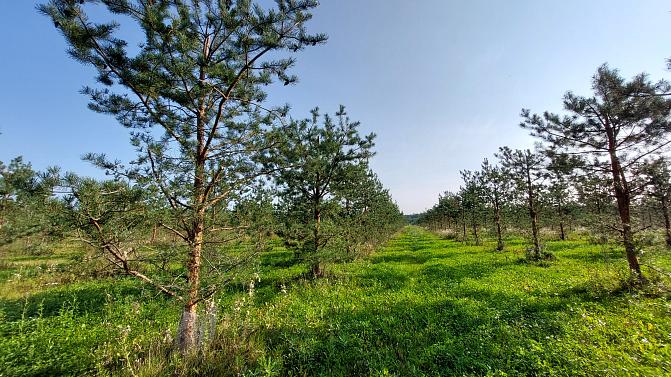
Forest tree breeding adds value to future forests
On this page
The use of genetically high-quality and diverse forest reproductive material, developed through the Natural Resources Institute Finland’s (Luke) long-term tree breeding work, has rapidly increased in forest regeneration over the past decade.
The use of improved forest reproductive material is estimated to be the single most effective way to enhance the growth and carbon sequestration of managed forests. As climate change progresses, tree breeding increasingly focuses on resilience and adaptation traits.
Tree breeding aims to improve the growth, quality, and resilience of forest regeneration material using plant breeding methods. It is based on selective breeding, where the best natural genetic material is identified and enriched over generations through repeated selection, testing, and crossing. The genetic improvements are transferred into practical forestry through the use of genetically diverse improved seed produced in elite seed orchards.


Record use of improved material in forest regeneration
The role of Luke’s tree breeding activities has grown in recent years due to the rapid uptake of seed orchard materials. In 2023, around 175 million forest tree seedlings were produced in Finland – over 98% of them from improved seed. Finland is thus ahead of many countries in applying the results of tree breeding.
According to Luke’s MEKA2.0 research project, the productivity boost achieved through breeding will start to significantly impact total forest growth from the 2030s onwards, reaching an annual increase of five million cubic metres by the 2050s. The utilisation of improved forest reproductive material supports the goals of Finland’s National Forest Strategy 2025 to increase forest productivity.
The productivity boost achieved through breeding will start to significantly impact total forest growth from the 2030s onwards.


Climate change requires trees to adapt and withstand new stressors
Climate change has already increased forest growth due to longer growing seasons and accumulated warmth. However, the future will likely bring snowless winters, extreme temperature fluctuations, and hot, dry summers in Finland. These changes heighten the risk of pests, diseases, drought, and frost damage.
New methods are needed to incorporate adaptive and resistance traits even more broadly into breeding efforts.
“We studied how Scots pine responds to drought during the growing season and discovered variation in drought tolerance that can be utilised in breeding. As the climate continues to change, more research investment in this field is needed,”
says senior scientist Sonja Kujala from Luke.


Genomic methods and somatic embryogenesis supporting tree breeding
Breeding materials are now being actively studied using genomic tools based on DNA data. Integrating genomic information helps refine breeding choices and supports the improvement of traits that are difficult to measure or only emerge later in a tree’s life cycle. Genotyping – the reading of DNA markers – has already been conducted on thousands of trees in Luke’s breeding programme, and the work continues as funding allows.
Somatic embryogenesis is a vegetative propagation method that enables faster and more efficient transfer of breeding results into forest regeneration compared to traditional seed production. Luke registered Europe’s first somatic embryogenesis spruce stock for commercial production in 2017.
“Somatic embryogenesis production is not dependent on cone crops. It allows for the selection of materials with different growth traits and goals,” explains senior scientist Mikko Tikkinen from Luke.
Currently, somatic embryogenesis materials are available for Southern and Central Finland. In addition to field trials, around 200,000 plants have already been produced for forest regeneration. To increase production volumes, Luke has developed artificial intelligence–assisted robotics. The ongoing LaGiants project is piloting the production process and working toward commercialising innovations.




